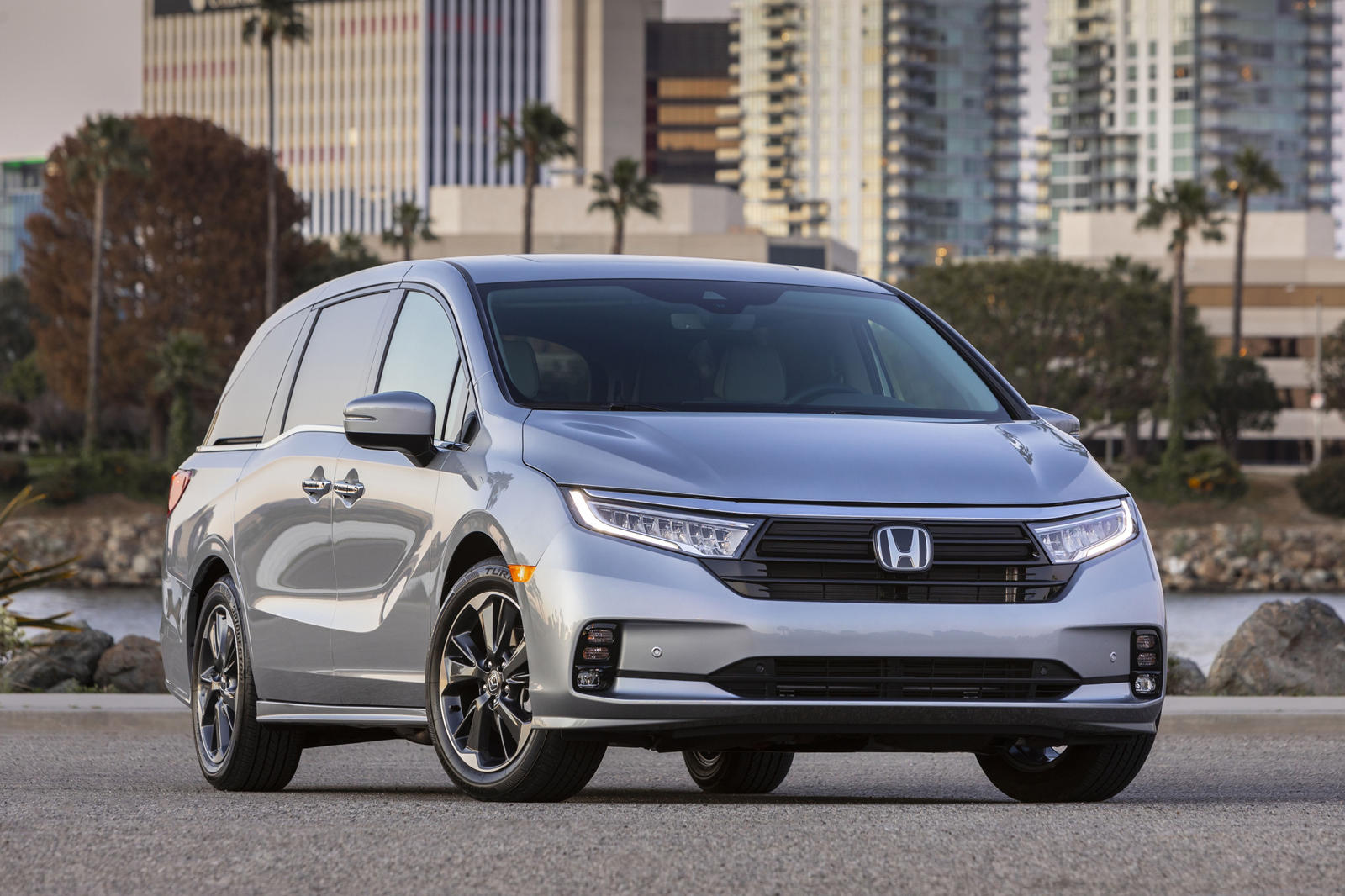

Depending on your lifestyle and where you drive, there are clear advantages to all-wheel drive and extra ground clearance. There are legitimate reasons to drive an SUV. If you compared a different SUV with a different minivan, the results might well be reversed. That said, the differences here are specific to these two Hondas and their particular tire choices. The Odyssey felt more like driving a large, semi-luxury sedan. The Pilot’s suspension is stiffer – no doubt to compensate for its higher centre of gravity – and you feel the difference over bigger bumps. Its bigger, lower-profile Continental tires hung on silently at speeds that provoked tortured howls from the Odyssey’s Bridgestones (all-seasons in both cases). While neither is especially engaging or athletic – even by the lower expectations of utility vehicles – we were surprised how the Pilot hunkered down when motored “expressively” through an on-ramp. Throw in some slithery surfaces, however, and the Pilot’s all-wheel-drive traction would greatly extend its advantage. Of course, that’s on a dry test track – you’d hardly feel the difference in daily driving. Their engines are identical, but the Pilot is a little lighter and geared better for quick getaways, which gets it to 100 kilometres an hour a few tenths of a second quicker. Courtesy of manufacturer Driving dynamics Odyssey’s additional knee room makes the difference between having useable space for adults. Once there, you’ll find similar shoulder and hip room on the Hondas’ rear benches, which are both three-person. But even then, a minivan’s low floor and sliding doors make the space much easier to enter and exit. You’d have to move up to a Chevrolet Suburban to match or beat the third-row legroom of a minivan. Note: Honda publishes two different sets of volumes for each model, based on different industry methodologies we compared the higher figures in each case.Īs for people, it’s a tie for legroom in the first and second rows, but in the third row, the Odyssey’s 21 centimetres of additional knee room makes the difference between having useable space for adults, or not. With the third-row seats down, the Odyssey has almost two-thirds more cargo volume.įlopping down the second-row backrests does make it easier to max out the Pilot’s cargo hold (and gets you a more-or-less flat floor) but if you can muster the energy to remove the Odyssey’s second-row seats (and have somewhere to store them) you can open up 4,470 litres compared with Pilot’s 2,912. The minivan’s load height at the rear is 20 centimetres closer to the ground, its tailgate aperture is 19 centimetres taller, and cargo volume behind the third-row seats is more than double the Pilot’s – 1,092 litres versus 524. It’s your call, but to my eyes the Odyssey’s long-low-and-wide stance, wedgy nose and lightning-flash window-line kink are striking the stubbier yet taller Pilot looks rotund and tippy-toed in comparison. It could go either way, depending on the proportions and the details. They’re both two-box shapes – with a compartment each for the engine and passengers, but no separate trunk – so there’s no intrinsic reason why one species would look “cooler” than the other. So, pricing in this case is almost a wash, except that at the lower end the Pilot comes with all-wheel drive but fewer features than a similarly priced Odyssey. Americans can buy front-wheel-drive Pilots, but in Canada, all-wheel drive is standard six trim grades start at about $43,000 – the same as Odyssey, but in a barer-bones LX trim – and top out at $56,805 for the Black Edition, which is basically a Touring version with different cosmetic touches and only available in black paint … or, um, white.


 0 kommentar(er)
0 kommentar(er)
